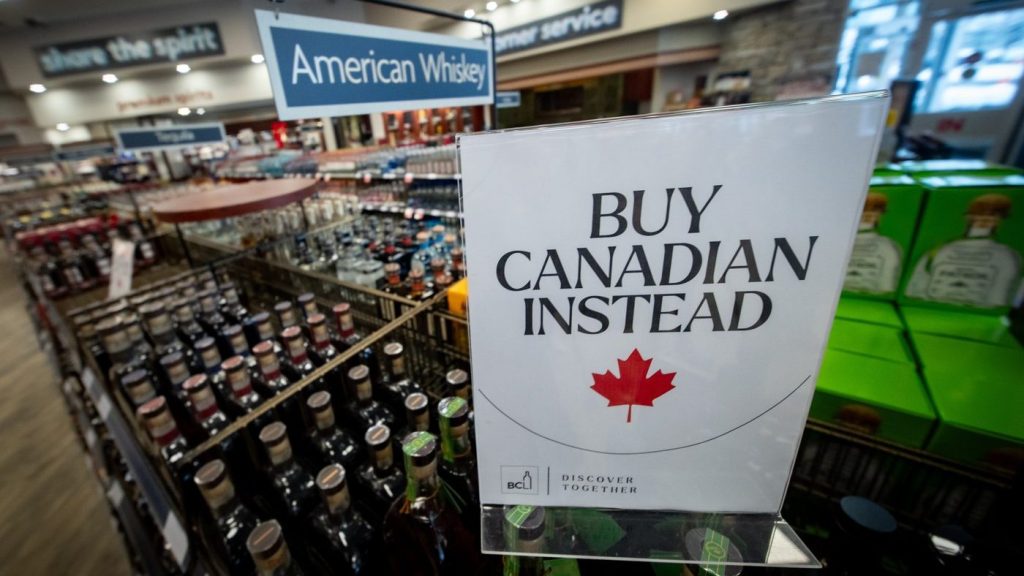From made in Canada to product of Canada: How to make sense of Canadian labels

Posted Feb 3, 2025 02:06:32 PM.
Last Updated Feb 3, 2025 05:36:42 PM.
Shoppers have been caught up in the buy Canadian fervour since U.S. President Donald Trump signed an executive order Sunday applying 25 per cent tariffs on all Canadian goods starting Tuesday.
While the U.S. leader granted a 30-day reprieve on Monday evening, shoppers are still committed to shopping for homegrown products and are scouring labels, manufacturer websites and factory addresses.
They’ve found plenty of items marked “product of Canada” or “made in Canada,” but what do these terms really mean? And can you really count on a maple leaf sticker on a package to prove something is Canadian?
Product of Canada
The Canadian Food Inspection Agency’s website says a “product of Canada” label denotes that all, or nearly all, of the food, processing and labour used to make the product is Canadian.
Products with this label were grown or raised by Canadian farmers and prepared and packaged in Canada, but can contain a small amount of imported food, such as spices, additives, vitamins, and flavourings.
For non-food products, the Competition Bureau says the label can only be used on items when at least 98 per cent of the costs of producing or manufacturing the good have been incurred in Canada.
Made in Canada
The Made in Canada label can be applied to items when “the last substantial transformation of the product occurred in Canada.”
For example, the CFIA says the processing of cheese, dough, sauce and other ingredients to create a pizza would be considered a substantial transformation.
For non-food products to use the label, the Competition Bureau says the last substantial transformation of the good must have occurred in Canada and at least 51 per cent of production or manufacturing costs must have been in the country.
The bureau and CFIA say companies that use the made in Canada label must also say whether the product is made in Canada from imported components or ingredients or a combination of imported and domestic parts or ingredients.
Canadian
The CFIA treats the word Canadian the same as it does “product of Canada,” meaning all or virtually all major ingredients, processing and labour used to make the food product must be Canadian.
It says if you see “Canadian” on a container of frozen lasagna, it would mean that the food meets the “Product of Canada” criteria.
The same is true for ingredients, so if “Canadian cheddar cheese” is marked on a package of cheddar cheese sauce, all or virtually all major ingredients, processing and labour used to make the cheddar cheese in the sauce must be Canadian.
100% Canadian
To use this term, the CFIA says the food or ingredient to which the claim applies must be entirely Canadian, including its processing and labour.
A Maple Leaf
The CFIA says use of the Maple Leaf on food packaging does not always mean that the product is wholly or partially Canadian but is often used to denote something is a “product of Canada.”
To ensure the leaf does not mislead consumers, it recommends food companies include a domestic content statement with the image, but many firms don’t follow that advice.
Produced or manufactured in Canada
The Competition Bureau website says terms like “produced”, or “manufactured” in Canada, are likely to be understood by consumers as “made in Canada” and should therefore comply with the requirements to use that claim.
Local
If a company advertises that a product is “local,” the CFIA says it must be produced in the province or territory in which it is sold, or sold across provincial borders within 50 km of the originating province or territory
The blue cow
Items in the dairy aisle often have a blue cow logo, which the Dairy Farmers of Canada organization says means it was made with 100 per cent Canadian milk and milk ingredients.
Meat and poultry
Companies can only call meat a “product of Canada” if it is from Canadian animals that are slaughtered in Canada.
Animals are considered Canadian if they are born or hatched, raised and slaughtered in Canada or, in the case of feeder cattle, if they have spent a period of at least 60 days in Canada before slaughter in Canada, the CFIA said.
Fish and seafood
The CFIA says wild fish and seafood products can be labelled “product of Canada,” if they were caught by vessels in Canadian waters and the products from the fish and seafood are processed in a Canadian establishment using Canadian ingredients.
In the case of farmed fish and seafood, the CFIA says the farm must be located in Canada and the processing must occur in a Canadian establishment with the use of Canadian ingredients.
Dairy and eggs
Eggs from imported hens and milk from imported cows can use the “product of Canada” label as long as the hen laid its eggs in Canada and the cow is milked in Canada.








